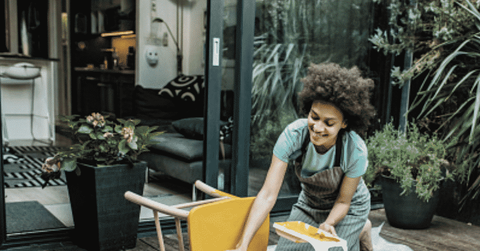An Artist’s Thoughts On How Painting Can Push You Into A Creative, Meditative Groove
Small children spend hours on end with crayons and paints, creating “masterpieces” that they love and their parents cherish forever. But that confidence in our own talents and creative abilities has a tendency to diminish as we get older. If you’re not a professional artist, devoting time to painting might not seem like a worthwhile activity. But research shows that as well as being enjoyable, art has positive benefits for our mental and physical health.
“In my experience, drawing and painting regularly can strengthen your ability to focus, which you can apply to other aspects of your life too,” Los Angeles-based artist and teacher Abby Fels tells Thrive. “The process of making art can be meditative, helping you stay in the present and focusing your awareness on the moment,” she says, and that’s true whatever your ability or age.
Getting started doesn’t require a big investment. You could borrow your child’s easel to help you tap into your inner artist, or sit outdoors for inspiration from nature, or doodle while on a phone call. “Use a soft drawing pencil, paper, watercolors, colored pencils or markers,” Fels says.
And you don’t need to carve out tons of time for your project — even 10 minutes will do. Once you get started, you’re likely to find that you are so immersed in your project — whether you’re interpreting the delicate details in a still life, or daubing paint on a giant piece of paper with sweeping brush strokes — that you lose track of time. And you might be pleasantly surprised at the results.
“My students experience joy and keep improving their skills. They end up with a portfolio of paintings and drawings that they can be very proud of having created,” Fels says. But if you don’t end up hanging your artwork on the walls, that’s fine. The objective is simply to relax and have fun without worrying about the outcome.
This post was written by Elaine Lipworth and originated on Thrive Global.






